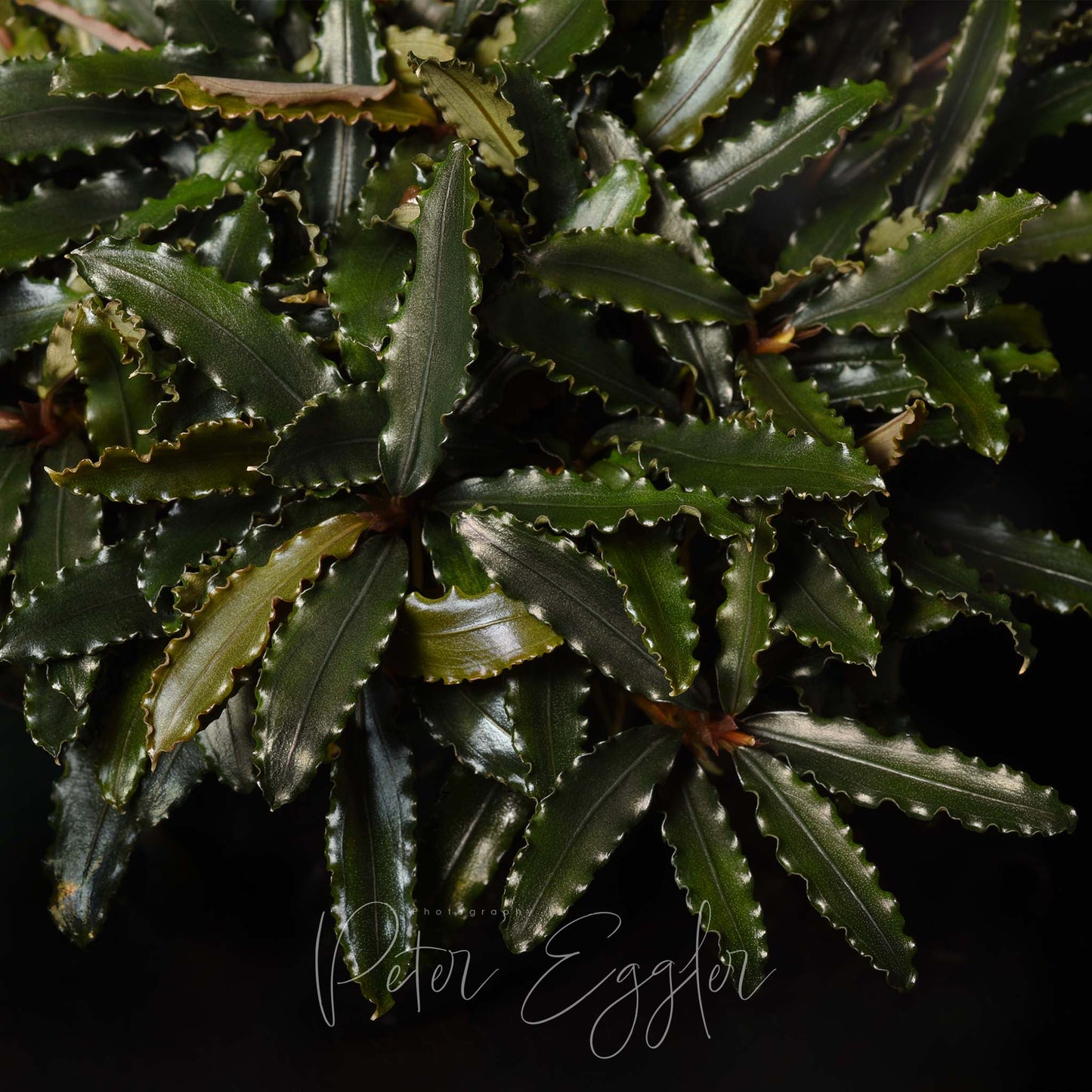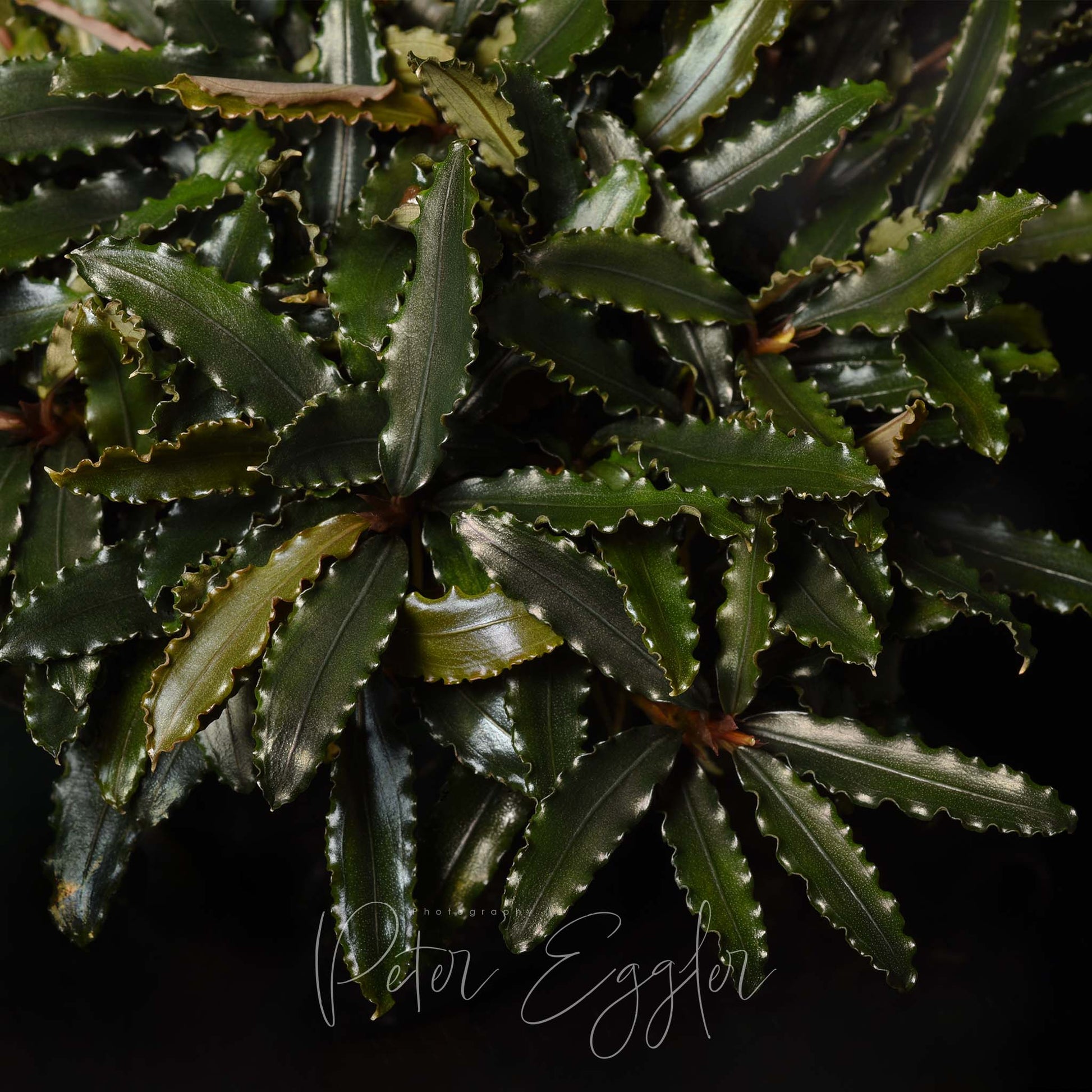Bucephalandra sp. (TQ-01080)
Bucephalandra sp. (TQ-01080)
Low stock: 2 left
Plant Size/Portion Size:
Plant Size/Portion Size:
Couldn't load pickup availability
Plant Name: Bucephalandra sp. (TQ-01080)
Tankquility Catalogue #: TQ-01080
Synonyms/Trade Names:
Original Plant Sourced as: Name withheld; considered arbitrary and of dubious value.
Plant Family: Araceae
Plant Native to1: Borneo
Plant Type: Semiaquatic (rheophyte)
Image Details2:
Image 1: Emerse Bucephalandra sp. (TQ-01080).
General Information and Cultivation3: A slow growing, medium-size upright buce with mid-green coloured foliage, relatively easy to cultivate in terrarium conditions if its requirements are met. A moderate amount of ventilation is necessary, and daily misting beneficial. As for all plants in the genus, emerse Bucephalandra sp. (TQ-01080) prefer low-light levels, otherwise bleaching of the leaves may occur. Attach to wood and rocks, or plant directly into the substrate. Do not bury the rhizome or it may rot. In terrarium culture, leaf blades grow to about 50mm×12mm, and plant clumps can reach 90mm in height.
Bucephalandra sp. (TQ-01080) is easy to maintain in an aquarium, like most species in the genus. Submerse plants produce leaf blades to about 42mm×10mm; and plant clumps can reach 100mm in height.
Identification Notes: Tankquility is in the process of determining the identity of clone (TQ-01080).
Ease of Care: Easy
Plant Size/Portion Size:
Emerse grown plant: 4 to 5-leaf (minimum) tip cutting with/without root development.
Submerse grown plant: 4 to 5-leaf (minimum) tip cutting with/without root development.
Further Reading:
1 Distribution is taken from Plants of the World Online (https://powo.science.kew.org/) unless stated otherwise.
2 All images used on the Tankquility website have been taken of plants growing in our nursery.
3 The general and cultural information provided is based on our own experience and observation. If we supply information from others, we have acknowledged the source.
SKU:
View full details
-
Plants can alter their appearance due to seasonal influence, or in response to different environmental conditions or stage of maturity. This phenomenon is known as phenotypic plasticity, and it is especially evident in Aquatic/Semiaquatic plants. Whilst we endeavour to portray a plant accurately, the plant you receive may have been growing under different conditions or be at a different stage of maturity to the one in the image(s) provided.
How we package your plants...
-
Aquatic/Semiaquatic plants will be shipped bare-rooted and wrapped in damp paper for protection when required.
-
Terrestrial/Epiphytic plants will be shipped bare-rooted and the roots wrapped in damp sphagnum moss for protection when required.

